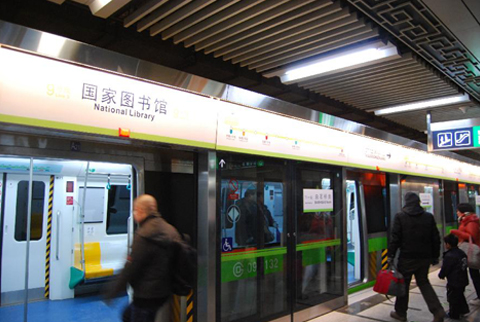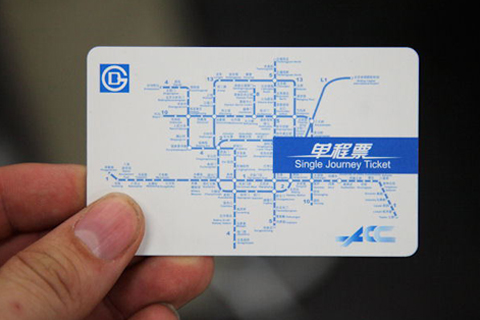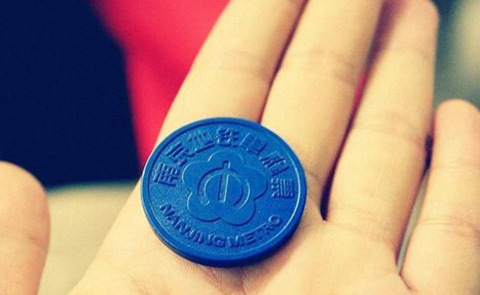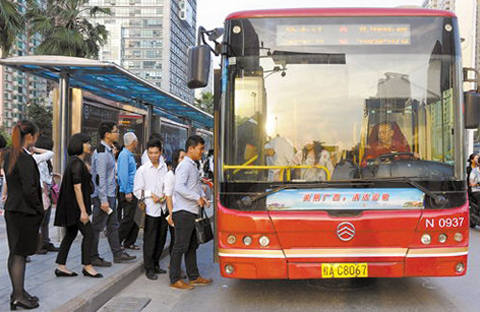In a recent newsletter, we introduced the key Chinese phrases you will need to buy “火车票(huǒchēpiào) train tickets” in China. With all the choices you have when it comes to type and class of travel, it can certainly get a little confusing. Now that you know how to get from one city to another, today we will take a look at how to get across town by taking the subway and bus.

Traveling by subway is convenient in larger cities in China like Beijing and Shanghai, which have well-developed subway systems. Not only is it affordable, but it is also fast, on schedule, and clean. The one downside is that it can get quite crowded at peak hours in the mornings and evening, but the same can be said for other forms of public transport as well.
Zhāng Míng: Lǐ Lěi, wǒmen zěnme qù bówùguǎn ne?
张 明: 李 磊,我们 怎么 去 博物馆 呢?
Zhang Ming: How do we get to the museum?
Lǐ Lěi: Zuò dìtiě ba.
李 磊:坐 地铁 吧。
Li Lei: By subway.
Zhāng Míng: Hǎo, wǒ qù mǎi liǎngzhāng dìtiěpiào.
张 明: 好, 我 去 买 两张 地铁票。
Zhang Ming: Ok, I will buy two tickets.
Do you know how to buy a ticket if you choose to travel by subway? Before you make your way to the platform you will need to look around for a small booth with a glass window. This is where you can buy a ticket or recharge your transport card.
If you plan to do a good deal of inner city travel, and you want to make paying for the subway and bus more convenient, then you might consider purchasing a “公交卡(gōng jiāo kǎ) public transport card.” Usually, you will need to pay a set fee for the card itself, about 20 yuan, which can generally be refunded when you leave the city and return the card. On top of the set fee for the card, you will need to load some money onto the card from which your fare will be deducted each time you use it.
Qǐng gěi wǒ yì zhāng gōngjiāokǎ, kǎ lǐ chōng wǔshí yuán.
请 给 我 一 张 公交卡, 卡里 充 50 元。
I’d like a transport card, and add 50 yuan to it.
If you don’t plan to do too much traveling on the subway, a “单程票(dānchéngpiào) single-journey ticket” will do the trick. At the ticket booth you can tell the attendant your destination station and he or she will tell you the amount due. Don’t be surprised if you get a token instead of a card; both are common.


Example:
Shòupiàoyuán: Nínhǎo! Nín qù nǎ?
售 票 员: 您好! 您 去 哪?
Conductor: Hello! May I know your destination?
Chéngkè: Wǒ yào qù wángfǔjǐng.
乘客: 我 要 去 王府井。
Passenger: I’m going to Wangfujing.
Shòupiàoyuán: Yígòng sān kuài qián. Gěi nín piào.
售 票 员: 一共 3 块 钱。 给 您 票。
Conductor: That’s 3 yuan. Here is your ticket.
Once you have purchased your transport card or ticket, you can make your way through the till and to the platform.

Taking the bus in China is a great way to see the city on the way to your destination. Most buses will have a metal cash box just at the top of the stairs to drop your money into. If you have a “公交卡(gōngjiāokǎ) public transport card,” you can simply swipe your card in front of the card scanner near the cash box. Otherwise, you will need to pay in small bills or coins. It is a good idea to always keep a few yuan in your pocket for such occasions, as you will not get change for larger bills unless you happen to take a bus with a “售票员(Shòupiàoyuán) ticket seller.” Be sure to tell the driver where you are going so he or she can tell you the exact fare, because different buses have different rates, and some vary according to the distance you will travel.
Shòupiàoyuán: Nínhǎo! Qǐngwèn nín dào nǎ?
售票员: 您好! 请问 您 到 哪?
Ticket Seller: Where are you going?
Chéngkè: Wǒ dào Rénmíngōngyuán.
乘客: 我 到 人民公园。
Passenger: I’m going to Renmin Park.
Shòupiàoyuán: Liǎng kuài qián.
售票员: 2 块 钱。
Ticket Seller: That’s 2 yuan.
Think you can handle what has been introduced in this lesson and want a slightly more challenging lesson on taking the bus? Check out this supplementary lesson!
Travel to China: How to Buy Train Tickets
10 Essential Chinese Sentences for Traveling in China (Part 1)
10 Essential Chinese Sentences for Traveling in China (Part 2)

1. If you want to purchase a public transport card, you should ask for a _____.
A. 交通卡(jiāotōngkǎ)
B. 单程票(dānchéngpiào)
C. 火车票(huǒchēpiào)
2. When you get on a bus in China, _____.
A. You can assume the fare is the same no matter how far you will travel.
B. You should ask the conductor how much the fare is.
C. You don’t need to pay if you’re a foreigner.
Chinese Popular Words
General Chinese (Beginner Level)
General Chinese (Intermediate Level)



